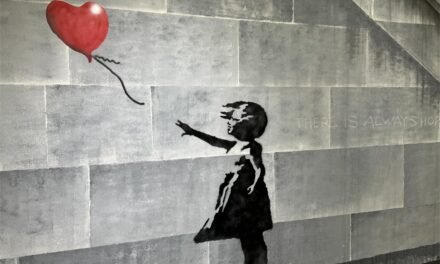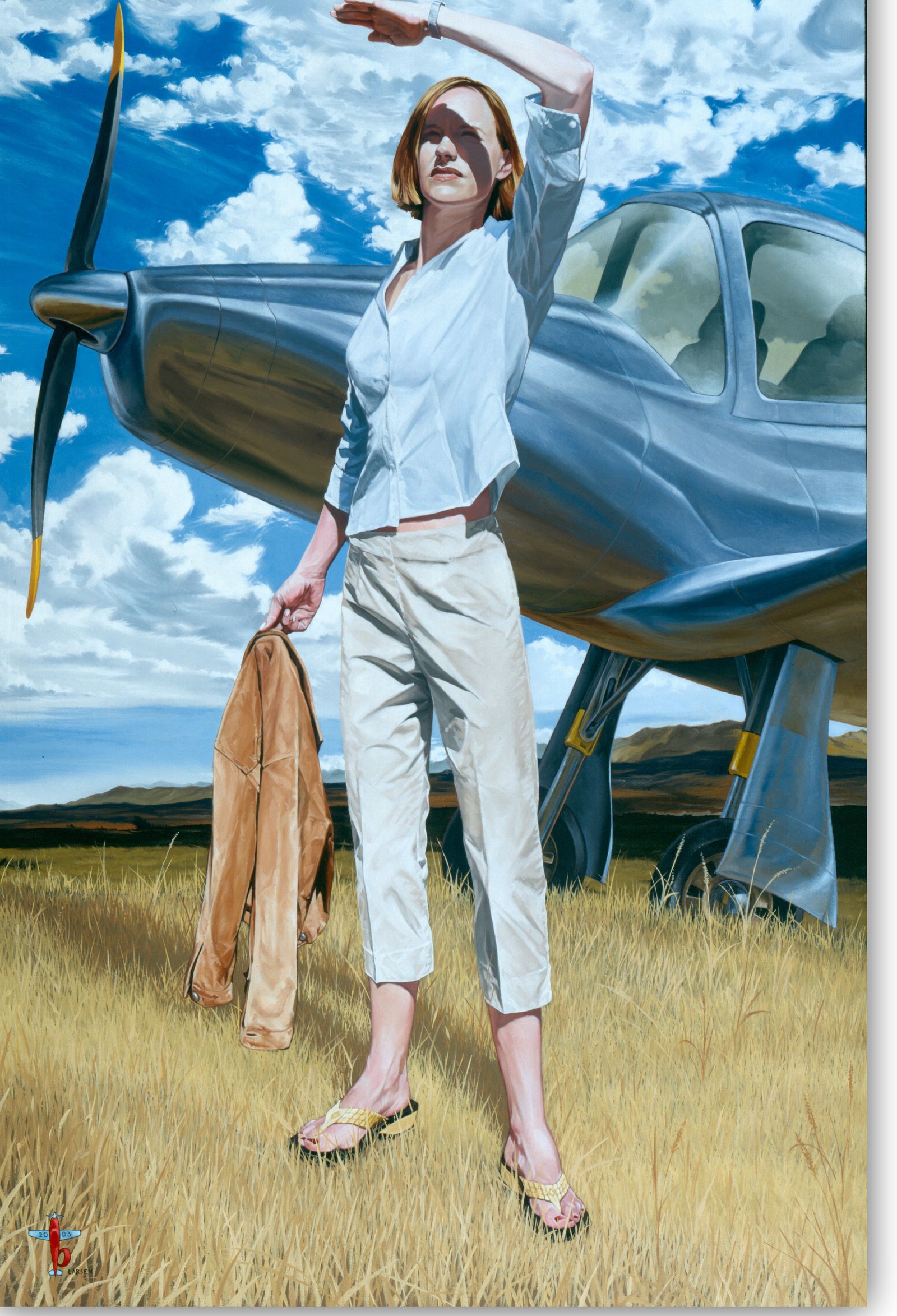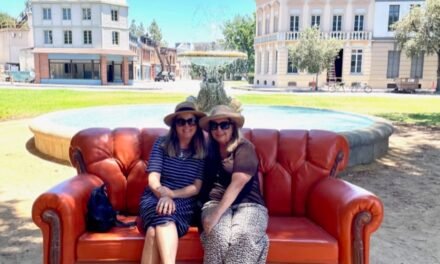
Interact with dynamic exhibits at Santa Fe’s Museum of International Folk Art

Santa Fe is known for its museums, among other noted attractions. It’s hard to find many cities with less than 90,000 people that can boast over a dozen state and private museums. Among them is the beloved Museum of International Folk Art, which has one of the largest collections in the world devoted to this specialty.
The museum is a magnet for both tourists and locals alike. It’s located in the foothills of Santa Fe on Museum Hill, along with four other well-known institutions, including the Museum of Spanish Colonial Art, Museum of Indian Arts & Culture and Wheelwright Museum of the American Indian, plus the Santa Fe Botanical Garden.
Founded in 1953 by Florence Dibell Bartlett, the Museum of International Folk Art seeks to bridge differences and create a sense of unity among cultures. Bartlett, a wealthy Chicagoan, began visiting New Mexico in the 1920s. She championed the handmade and collected objects from around the world, from textiles and ceramics to wood carvings, costumes, paintings and jewelry. Over 2,500 of these objects served as the founding collection for the museum.

Bobo bu ko by James Bauer
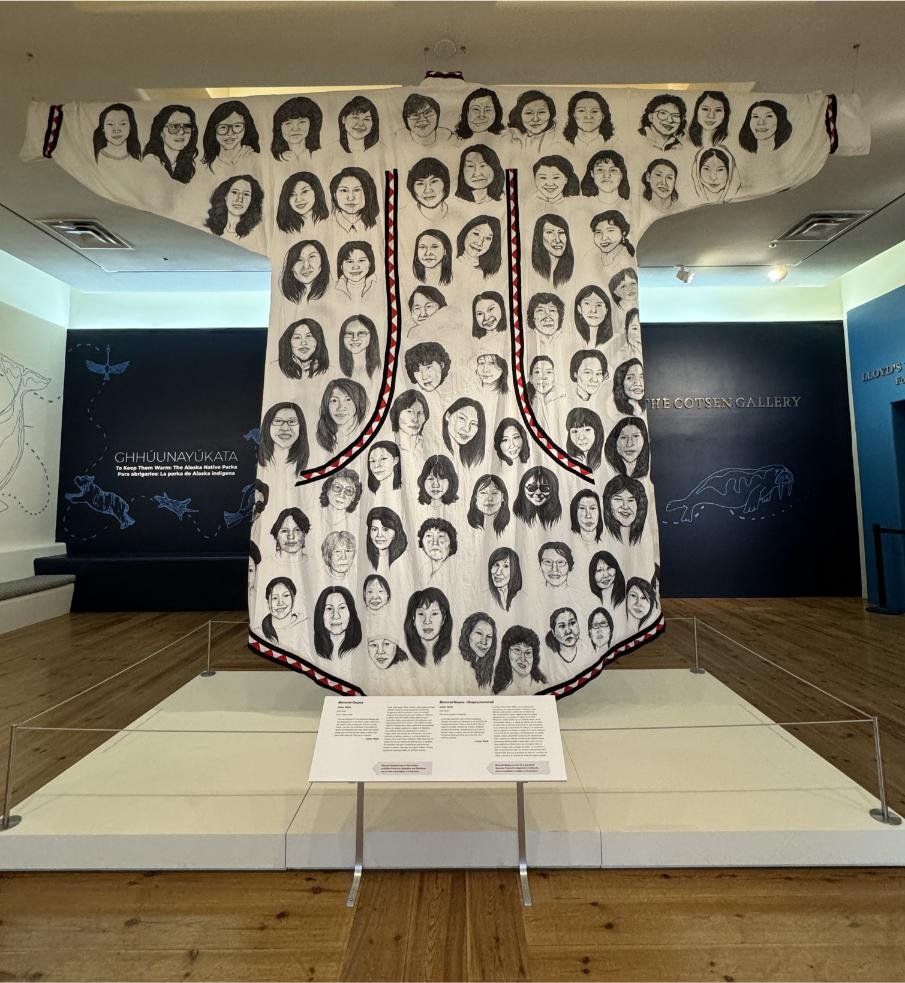
Memorial Qaspeq, photo by Debbie Stone
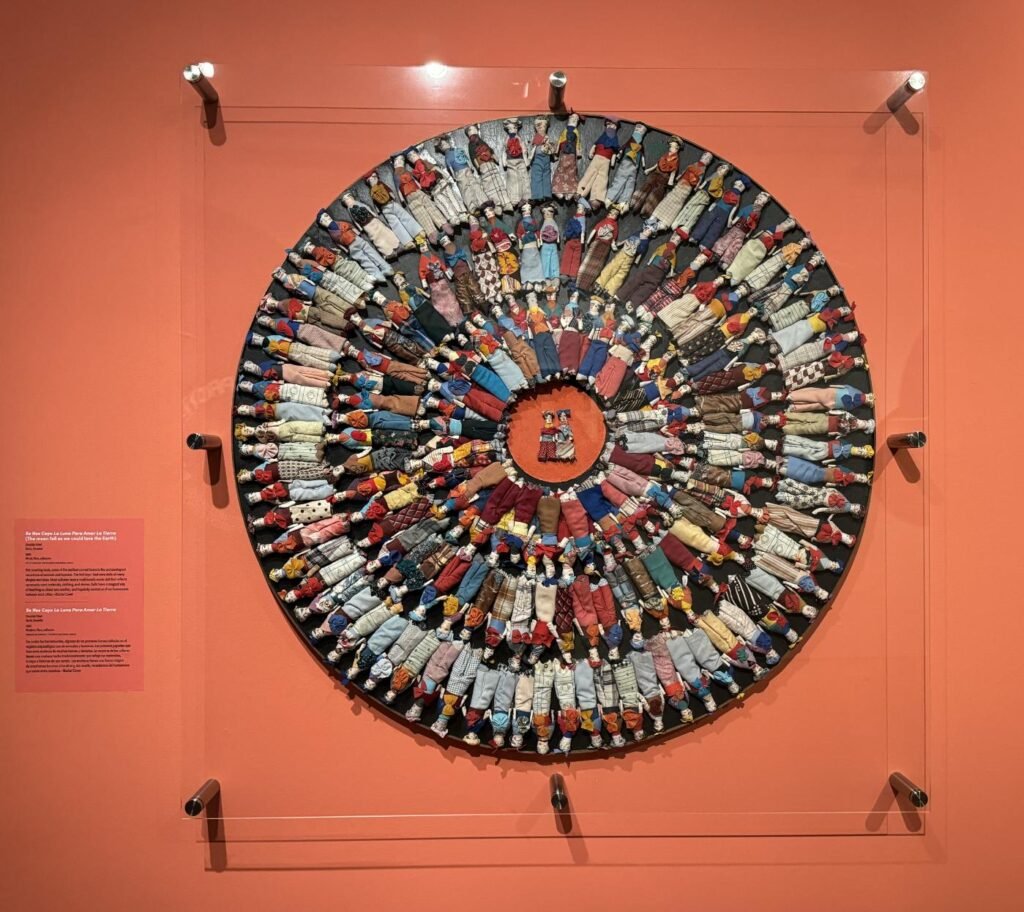
One of the pieces in the Staff Picks exhibit, photo by Debbie Stone
Since its opening, the museum has grown in size and today, its vast and unique collections contain more than 130,000 examples of folk and traditional arts from around the world. They are organized geographically, representing cultures from Africa, Asia, Europe, Latin America & the Caribbean, North America and Oceania.
On permanent display is “Multiple Visions: A Common Bond,” a one-of-a-kind exhibition of approximately 10,000 pieces of folk art, toys, miniatures, textiles and more from the Alexander and Susan Girard Collection. The Girards were consummate collectors and amassed over 100,000 objects in total, from more than one hundred countries on six continents. They gifted their collection to the museum and Alexander Girard, a renowned designer, painstakingly and meticulously arranged and installed the entire exhibition, which opened in 1982.
The objects are displayed within vignettes in diorama fashion and installed at different heights – some even hang from the ceiling. This style allows viewers to peer into the sets from different angles to glimpse the many treasures within the enchanting tableaus. It’s a whimsical, immersive and entirely visual experience that highlights Girard’s breadth of creativity, his sense of perspective and detail.
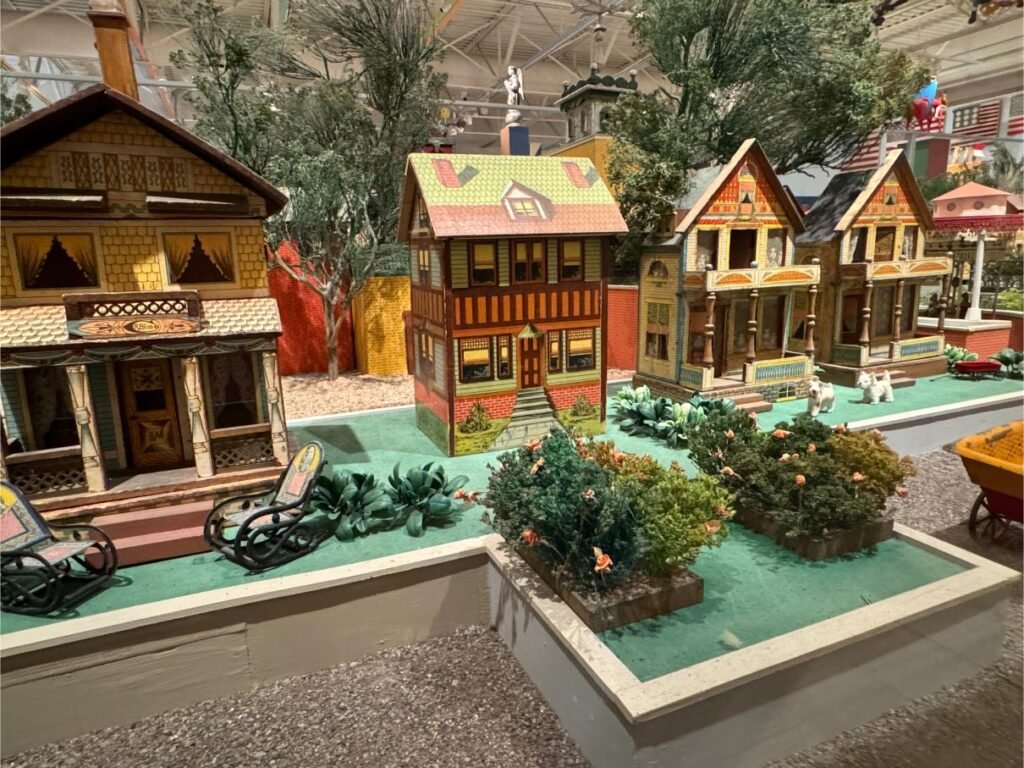
Girard’s displays will entertain adults and children alike, photo by Debbie Stone
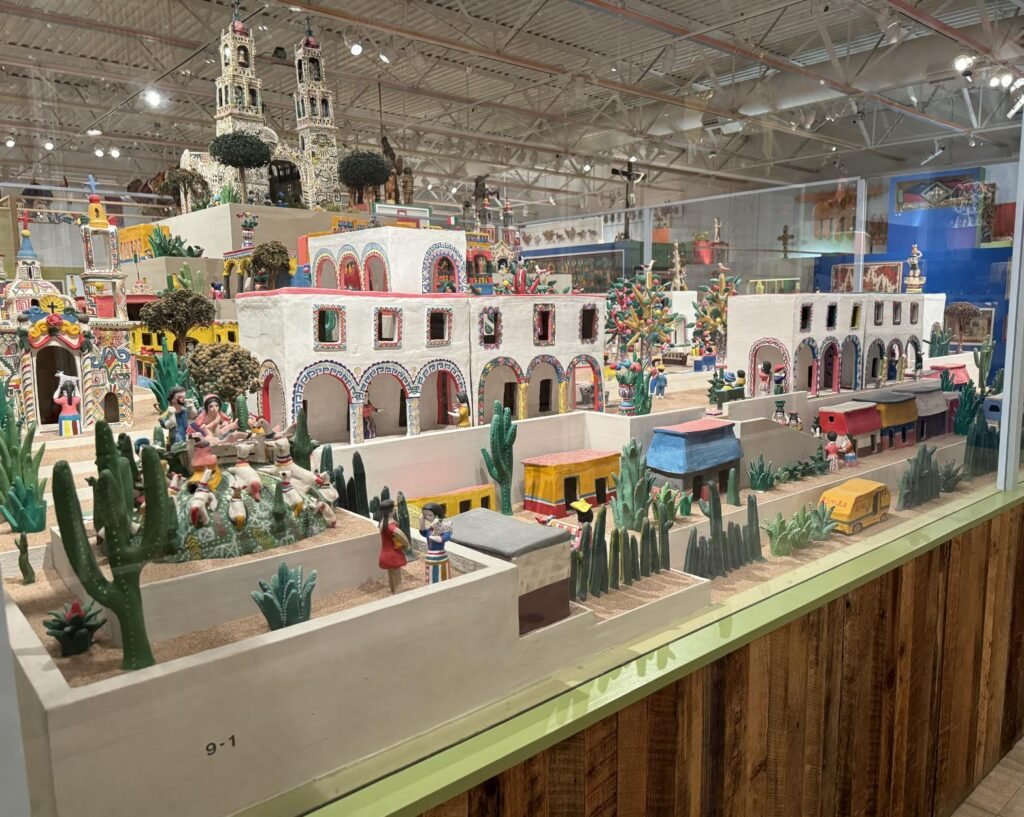
One of Alexander Girard’s displays, photo by Debbie Stone
Visitors to the museum may find the immensity of this showcase overwhelming initially, as it’s hard to know what and where to focus on first. Which is a prime reason for multiple return trips, as each time you step inside this wonderland, you’ll discover something new.
The museum also hosts several temporary exhibits such as “Staff Picks,” which is a gallery devoted to objects that were selected by members of the museum staff. The pieces emphasize the diversity of the museum’s collection and present the perspective of employees through their favorite works.
Thirty-five staff members, from curators to security guards, each chose two objects from the museum’s collection for a total of seventy works, representing 26 countries. The exhibit offers insight into hidden gems – pieces rarely seen by the public or even the museum staff. You’ll find everything from a John Deere toy tractor and plow, wooden alligator with an ice cream cone, cigar box guitar and a barber’s sign to a watercolor by Georgia O’Keeffe. Then there’s “Sleep Product” by Susie Brandt, a large piece consisting of quilted clothing labels, stuffing and scrap fabric, made to look like a mattress. It’s amazing how many labels were collected by the artist and the work and time involved in this creation is impressive.

Staff Picks gallery, photo by Debbie Stone
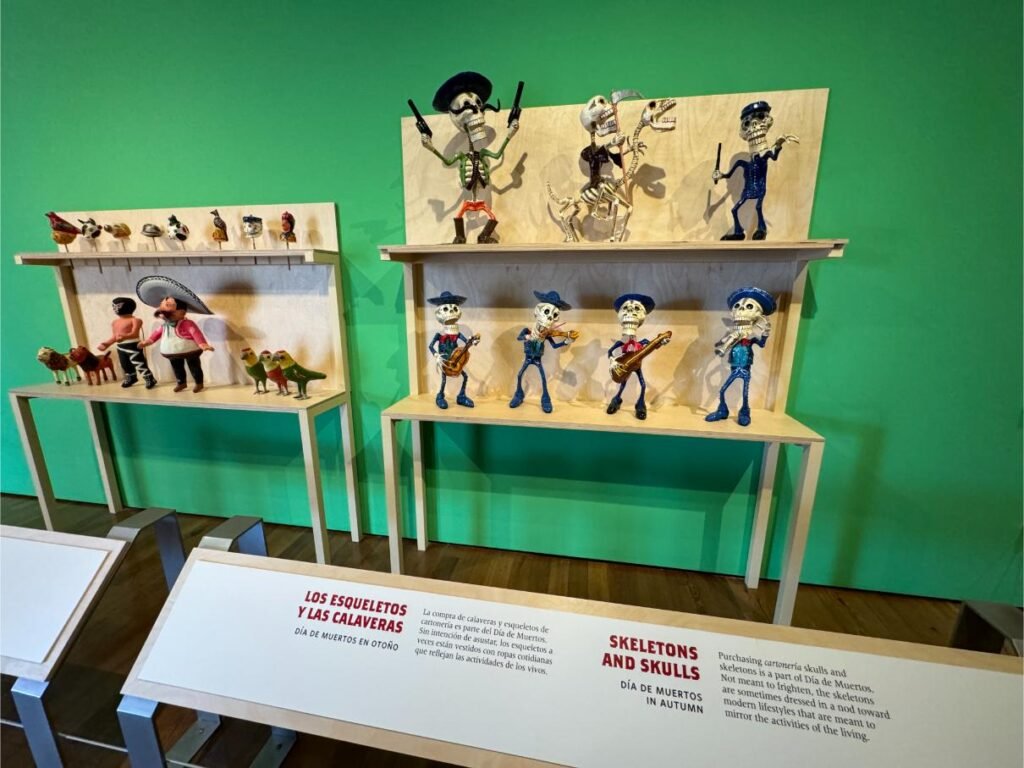
Skeletons and skulls, photo by Debbie Stone
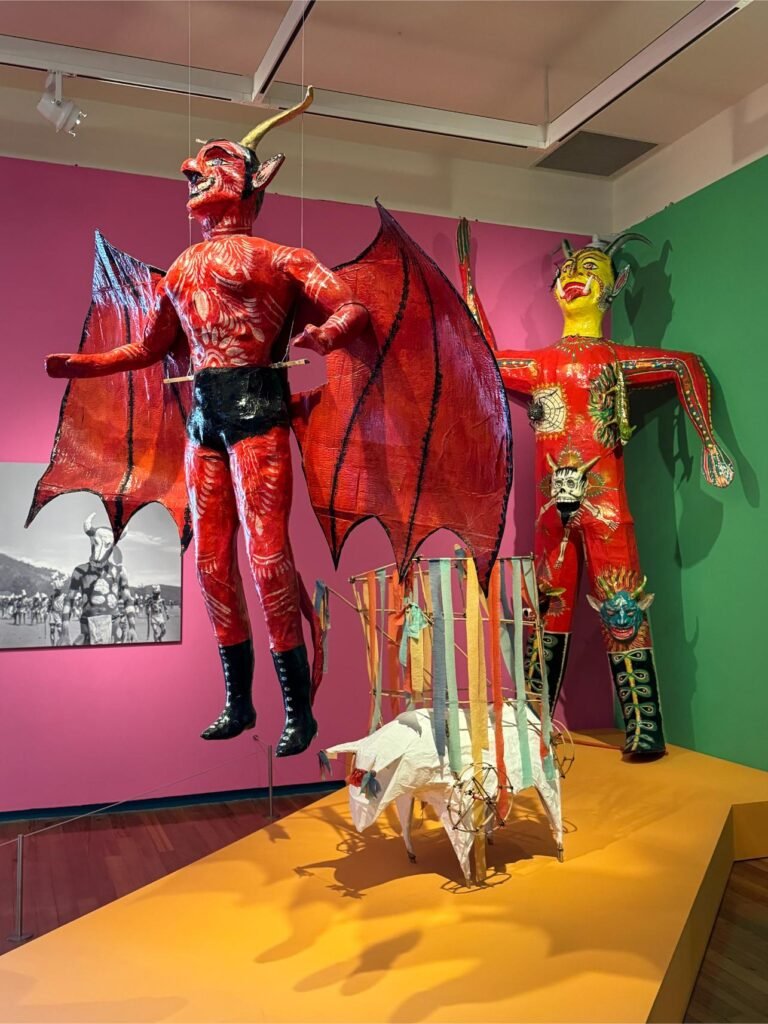
The Mexican art of paper and paste, photo by Debbie Stone
A traveling exhibition, “Protection: Adaptation and Resistance,” presents the work of several dozen Alaska Native artists, who explore the themes of climate crisis, social justice and ancestral knowledge. Objects on display range from images of traditional tattooing, posters for public health and well-being, elements of regalia and graphic design pieces.
The showstopper is Amber Webb’s 12-foot-high qaspeq or cloth overshirt with the drawn portraits of more than two hundred indigenous women who have been missing or murdered in Alaska since 1950. This memorial qaspeq is emotionally visceral, as it emphasizes the scale of loss and grief within indigenous communities. Webb’s statement is a call for a solution to violence against women and healing for Native societies.
Alaska Native peoples’ creativity is also featured in an exhibit on the art of the parka, a clothing item made for survival in the harsh environments of Alaska. As someone who once lived in Fairbanks for a number of years, I can attest to the necessity of having a parka to make it through the long, cold winters, though my parka was not quite like the ones seen at this museum. These examples are more than just garments. “They are complex expressions of Alaska Native cultures’ deep respect for the animals of land and sea.”
Twenty parkas representing six Alaska Native communities are on display with examples from the mid-19th century to contemporary styles (check out the fish skin moto style jacket!), illustrating this historic, yet ever-evolving art form. Materials such as furs, skins and even intestines are used to illustrate the ingenuity of the parkas’ designers.

Traditional Inuit tattoos
Drawings, photographic portraits and traditional dolls assist in providing context for how parkas are worn in daily use, during ceremonies and for hunting purposes. There’s also an array of sewing tools, made of walrus ivory, wood and animal hide to round out the full spectrum of this craft.
One of the most vivid exhibits currently at the museum is “La Cartoneria Mexicana/The Mexican Art of Paper and Paste.” Cartoneria, also called papier maché, has a long and rich history in Mexican folk art traditions. Subjects such as piñatas, dolls, Day of the Dead skeletons, devils, dragons, masks, toys and fantastical animals made from paper, cardboard and paste fill the galleries of the Hispanic Heritage Wing. Color lovers will delight in all the brilliant, eye-popping hues. Photos and videos of the artists’ labor-intensive process, along with clips of festivals where such items are featured are included.
The museum’s gift shop is also a trove of interesting items, many that you won’t see anywhere else. It’s the perfect place to pick up that special souvenir or present. And nearby is the Museum Café, a great spot for lunch, coffee or a midday snack.
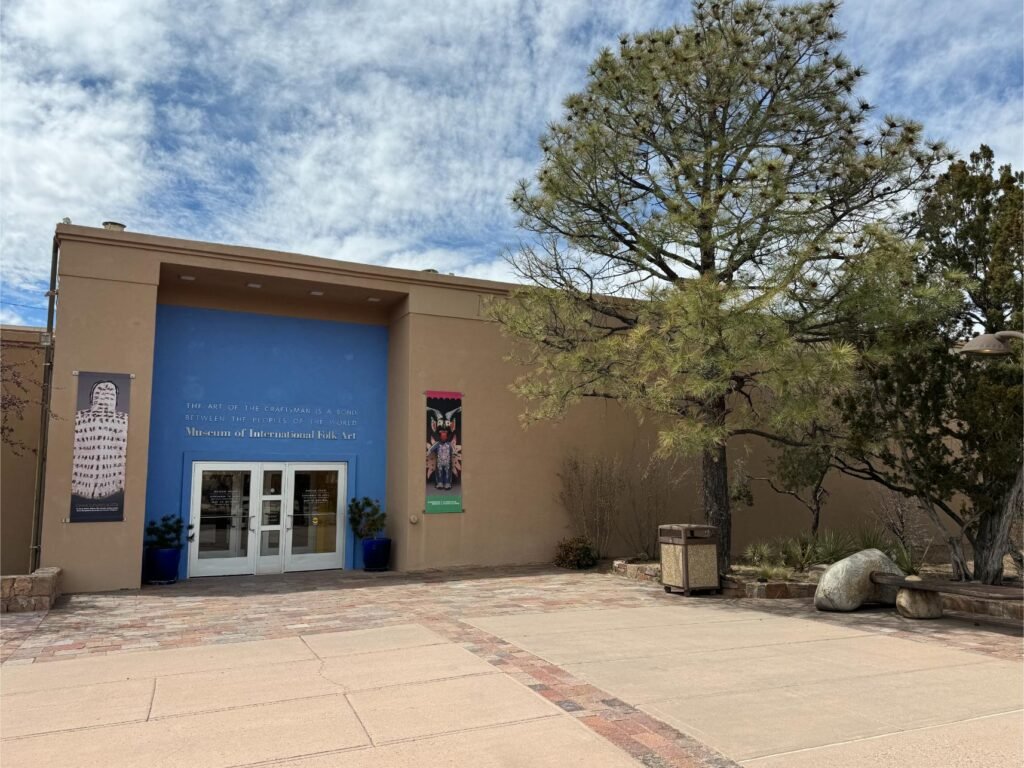
Museum of International Folk Art, photo by Debbie Stone


